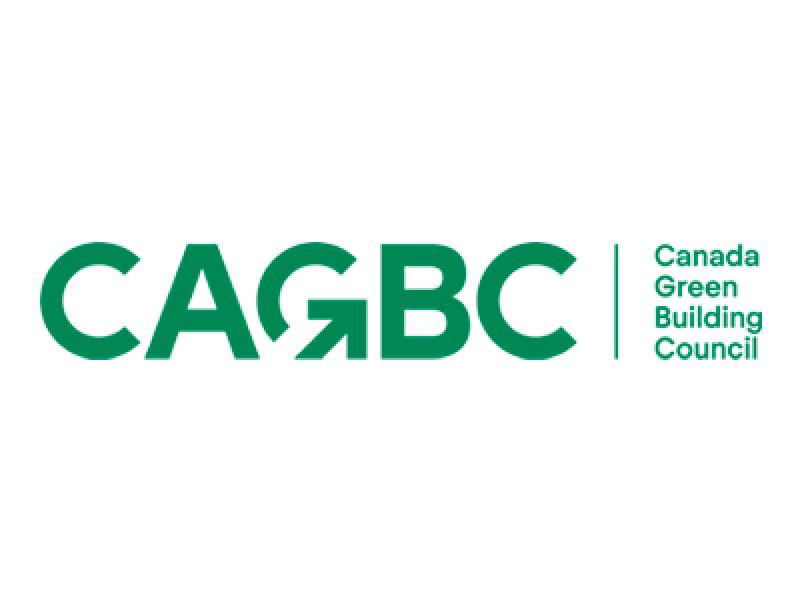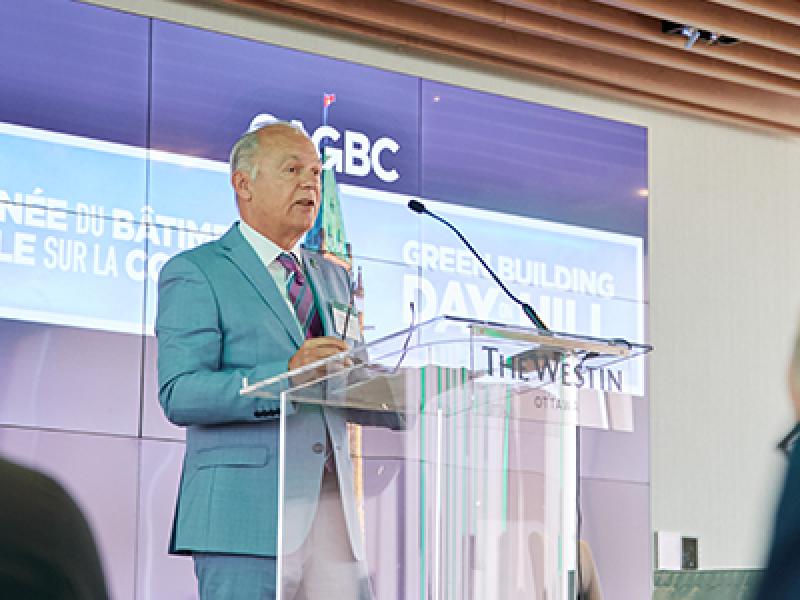 USGBC provided the first details of ideas being considered for LEED v5 Building Design and Construction (BD+C) at Greenbuild in Washington DC in late September, as noted in our CAGBC at Greenbuild 2023 about the conference.
USGBC provided the first details of ideas being considered for LEED v5 Building Design and Construction (BD+C) at Greenbuild in Washington DC in late September, as noted in our CAGBC at Greenbuild 2023 about the conference.
While the initial draft is expected in the first quarter of 2024, the CAGBC wants to let you know what we’ve learned. Keep in mind that the development process is still in full swing, with committees debating ideas, so everything we learned is preliminary and directional.
What’s new in BD+C?
1. Emphasis on carbon reduction. CAGBC staff are particularly excited by the focus on addressing carbon, something we have heard the Canadian market wants from LEED. A critical goal of the update is decarbonization of the building industry, as swiftly as possible, reflecting the urgency of the climate crisis. Expect to see electrification called out clearly in the upcoming draft, with some similarities to pilot credit 160, along with an emphasis on minimization of peak heating and cooling demand and otherwise acting as a good grid citizen. Also expect to see stronger emphasis on refrigerant management and energy efficiency metrics.
2. Resiliency is also top of mind. After the summer that Canadians have just experienced, industry professionals will be glad to hear of a proposed Resilient Indoor Spaces credit that addresses planning for wildfire smoke and other episodic events. Additionally, prerequisites are being considered for an assessment for resilience, as well as one for carbon. Lastly, a Resilient Site and Building Exterior Design credit is being drafted. In all, it is expected that at least half the points will address these first two points (carbon reduction and resiliency) directly or indirectly.
3. View the credits through two lenses! If you are a LEED practitioner, you are probably happy with the LEED credit categories that we have had for over two decades, as they do align with the ways we think when designing a project. However, if you ever tried to answer the question, “Which LEED credits address climate action?”, you will recognize that it can be difficult to draw them out. This will no longer be the case. LEED v5 will group the credits through both the traditional categories and, with the click of a button, through these higher-order new headings:
* Climate Action
* Quality of Life
* Ecological Conservation & Restoration
4. Embodied carbon takes the stage. LEED v4 introduced us to whole building life cycle assessment with three points, which started the conversation for many in the market. LEED v4.1 pushed that further with four points using a pathway scale. LEED v5 might take that up to eight points, with a prerequisite for all buildings to at least measure embodied carbon from structure and enclosure, and potentially reduce their carbon (prescriptively or through a performance measurement). Sessions at Greenbuild abounded with discussions on embodied carbon, showing the market is more than ready to address this issue.
5. Equity is here at last. A key consideration for LEED v5 is a focus on equity, with a new prerequisite to consider the social impact of the project, and an Occupant Needs Assessment prerequisite for the indoor environment. Expect to see equity woven into a new credit for Inclusive Design as well as other credits.
6. Water reuse may finally be a credit. Yes, while water reuse has always been recognized as a strategy for reducing water use, it is now projected to be called out as a separate credit to encourage projects to reuse water or to be ready to do so (i.e., dual plumbed).
7. Platform re-invention. The USGBC is hard at work on a new IT platform to host LEED, which aims to be a significant improvement over the current experience with LEED Online.
8. New types of Prerequisites. Prerequisites will fall into five classifications, some of which are new to BD+C: readiness (e.g., EV ready), policies, assessments, data reporting/management, and minimum performance.
Industry professionals and CAGBC members who are keen to be more involved in LEED v5 development, are encouraged to join CAGBC’s LEED v5 Accelerators (D+C and O+M). These Accelerators, with Canadian practitioners and building owners, will review and discuss the drafts when they are made available, to inform and support CAGBC’s feedback to the USGBC.
Stay tuned for more articles in our Lead up to LEED v5 series and visit USGBC’s LEED v5 website for more information.










